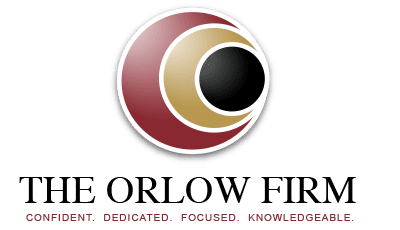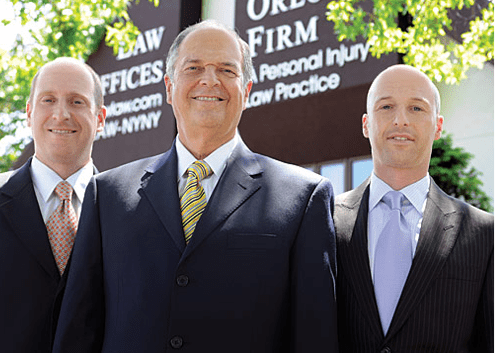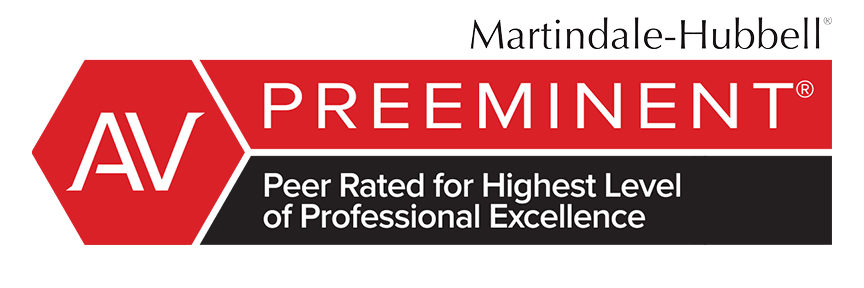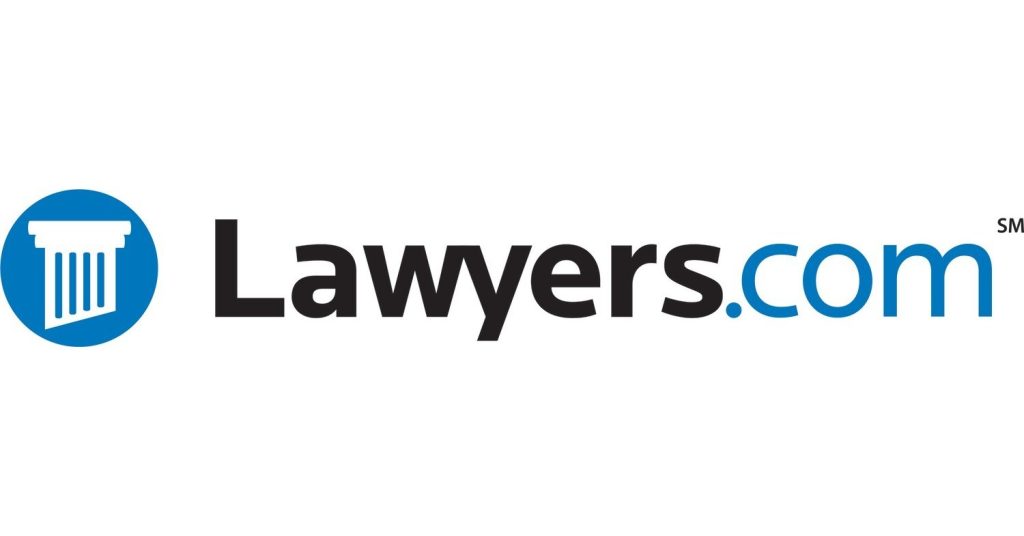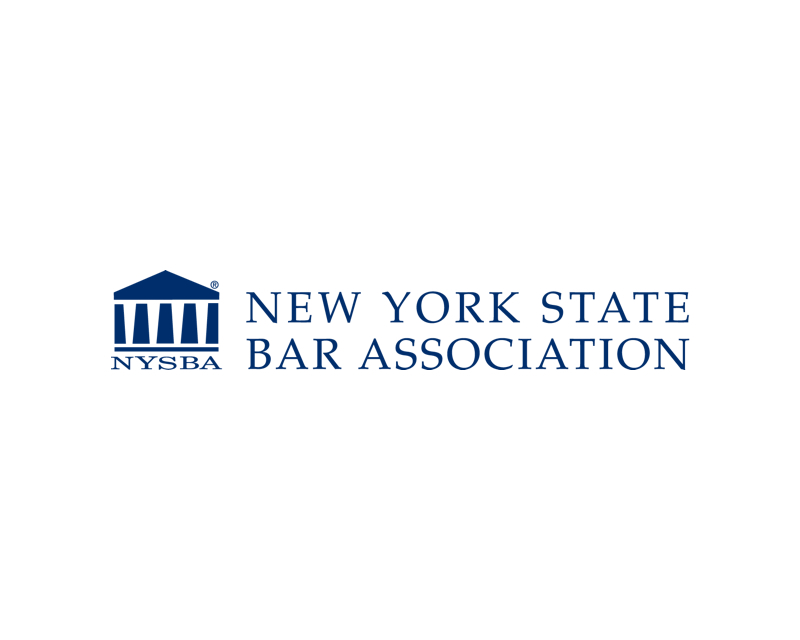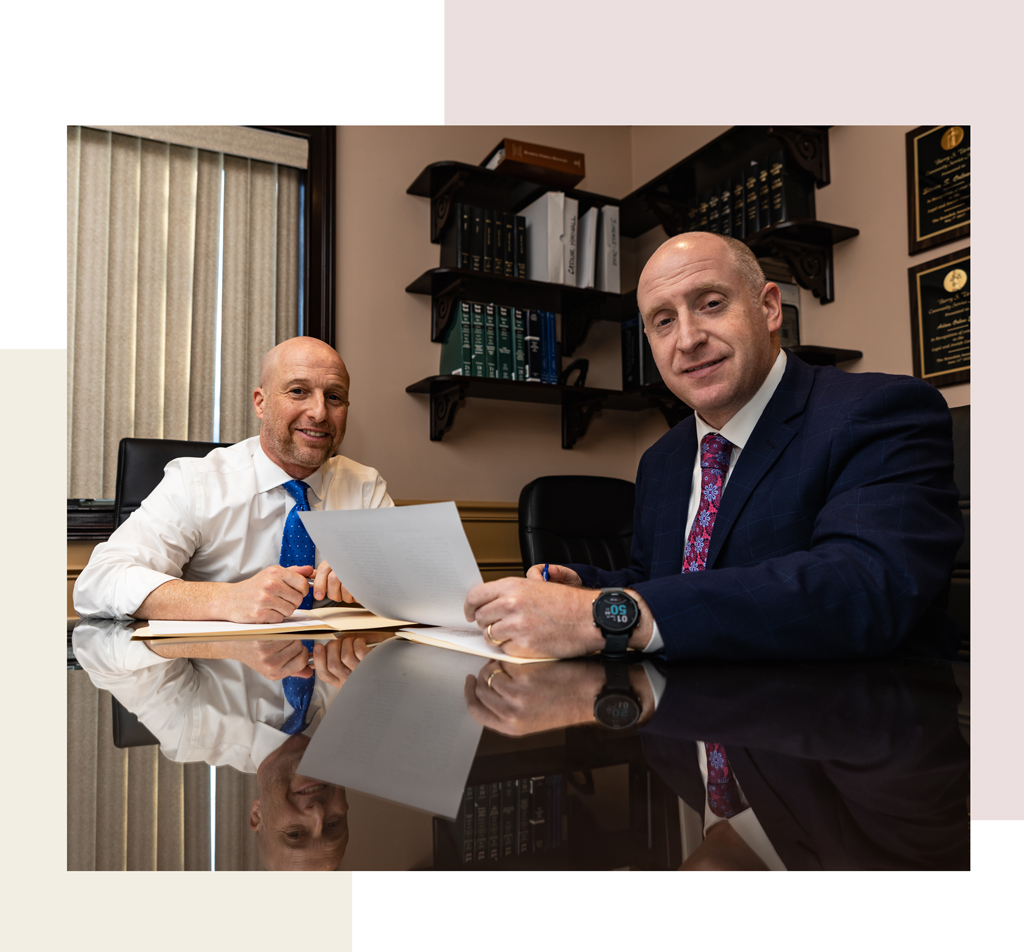The Following People Contributed to This Page
Cindy Cordova is a seasoned legal writer with over seven years of experience crafting clear, informative, and professional content for law firm websites. With a B.A. in English from Trinity Christian College, she combines her strong writing background with a deep understanding of legal topics to help firms connect with their clients through trustworthy and accessible content.
- September 19, 2025
What Does “Open and Obvious Hazard” Mean in New York Premises Liability Cases?
Quick Answer: In New York premises liability cases, an “open and obvious hazard” refers to a dangerous condition on someone’s property that is readily apparent and easily discoverable by a reasonable person upon ordinary inspection. Essentially, if a condition is so clearly visible that someone exercising ordinary care would see it, the property owner may not be held liable for injuries resulting from that condition, as the injured party is expected to have avoided it.
Here’s a more detailed breakdown of open and obvious hazards:
- Key Elements of an Open and Obvious Hazard: For a hazard to qualify as “open and obvious,” it must meet specific criteria:
- Readily Apparent: The hazard must be something that a person exercising reasonable care would easily see and recognize without special effort.
- Ordinary Inspection: The hazard should be visible during a normal, casual observation of the premises, not requiring close scrutiny or special investigation.
- Reasonable Person Standard: The determination of whether a hazard is “open and obvious” is based on what a hypothetical, reasonably prudent person would observe and understand in the given situation.
- No Duty to Warn: If a hazard is legally deemed open and obvious, the property owner’s duty to warn visitors of the danger is typically lessened or entirely eliminated, as the warning would be redundant.
- Examples of Open and Obvious Hazards: These common scenarios illustrate conditions that courts might consider “open and obvious”:
- A large, clearly visible puddle of water on a brightly lit tile floor.
- A prominent and easily seen hole in a sidewalk that a reasonable pedestrian would notice.
- A low-hanging tree branch in a well-lit, unobstructed area.
- A clearly visible and extensive patch of ice on a walkway, especially during cold weather conditions.
- Important Considerations: The application of the “open and obvious” defense is not always straightforward:
- Context Matters: What is considered “open and obvious” can significantly depend on the specific surrounding circumstances. Factors like lighting conditions (e.g., dim lighting obscuring a hazard), overall visibility, the time of day, and the nature of the activity being performed on the premises can all influence this determination.
- Distractions: If a visitor’s attention was reasonably distracted by something else (e.g., an attractive display in a store) that prevented them from seeing an otherwise visible hazard, it might be argued that the hazard was not as “open and obvious” as it might initially appear.
- Property Owner’s Knowledge: Even if a hazard is technically open and obvious, the property owner may still have a duty to address it if they have actual knowledge of the hazard and recognize its potential for harm, especially if it’s a condition that cannot reasonably be avoided by visitors.
In essence, the “open and obvious” defense in New York premises liability cases argues that the injured party should have avoided the hazard because it was easily discoverable, thereby attempting to shift some or all of the responsibility for the injury away from the property owner.
To better understand if “open and obvious” might apply to your injury case, or how it could impact your right to compensation, contact The Orlow Firm’s premises liability attorneys today at (646) 647-3398 for a free consultation.
How Can an Open and Obvious Hazard Affect Your Right to Compensation in NYC?
In New York City, if you’re injured on someone else’s property, you may be able to file a personal injury claim. However, if the dangerous condition that caused your injury is considered “open and obvious,” it can affect your right to compensation. Simply put, this legal idea can reduce—or even block—your ability to collect money for your injuries.
What does “open and obvious” mean? It refers to a hazard that a reasonable person would likely notice and avoid. Courts may find that the property owner shouldn’t be held fully responsible if the danger was clear enough for most people to see and avoid on their own.
How does this affect your case in NYC?
- Reduced compensation: If the hazard was open and obvious, the property owner may still be partly at fault, but the amount of money you can recover may be reduced.
- Shared fault (comparative negligence): New York follows a rule called “comparative negligence.” This means if you are partly to blame for getting hurt, your compensation is lowered by your share of the fault. For example, if you’re found 30% at fault, and your total damages are $100,000, you may receive $70,000.
- Claim denial: In some cases, if the hazard was very clear and avoidable, the court may say the property owner had no duty to warn you—making it harder to win your case.
Why does this matter? Property owners have a duty to keep their places safe. But that duty may not apply if the risk is something anyone should recognize—like a large hole surrounded by caution tape or stairs clearly marked as under repair.
That said, each case is unique. What seems obvious to one person may not be to another, especially for children, seniors, or people with disabilities. That’s why courts look at the full situation before making a decision.
If you’ve been injured due to a dangerous condition in New York City and aren’t sure whether it was “open and obvious,” it’s important to understand your rights. The law is not always black and white. To talk to someone about your specific situation, call The Orlow Firm at (646) 647-3398 for a free consultation.
Who Decides If a Hazard Was Open and Obvious in a New York Injury Claim?
In a New York injury claim, whether a hazard is considered “open and obvious” is usually decided by the court. More specifically, a judge—or sometimes a jury—reviews the facts and makes a determination based on how visible or easily noticeable the danger was at the time of the accident.
This decision is not made lightly. It involves looking at what a “reasonable person” would have seen or understood. In legal terms, a reasonable person is someone using normal caution and common sense. If that person could easily see and avoid the hazard, a court may decide the condition was open and obvious.
However, every case is different. Courts consider many details when deciding if a hazard was open and obvious:
- Was the danger clearly visible? For example, a large pothole in broad daylight may be seen as obvious. But a loose floor tile in a dark hallway might not be.
- Was the person distracted or rushed? If someone was doing something expected—like carrying groceries or watching for traffic—the hazard may not be considered obvious, even if visible.
- Did the property layout make it hard to avoid the danger? In tight NYC spaces like subway stations or apartment buildings, people may not have room to go around a hazard.
In many New York City injury cases, lawyers for the property owner might argue that the hazard was open and obvious to avoid liability. On the other hand, your attorney may argue that even an obvious hazard can still be dangerous and the property owner still had a duty to make it safe or provide a warning.
If your case goes to court, the judge may decide the issue before trial in a motion. Other times, especially if facts are in dispute, a jury will hear both sides and decide. This is why having legal help matters—an experienced attorney can help gather evidence, present your case clearly, and challenge any claims that the hazard was something you should have avoided.
If you or a loved one were injured in New York City, and you’re not sure whether the hazard was open and obvious, speaking to a personal injury attorney can help. To discuss your case, contact The Orlow Firm at (646) 647-3398 for a free consultation.
Does Property Owner Responsibility Change with an Open and Obvious Condition?
In New York, property owners have a duty to keep their property safe for people who enter it. But when a danger is considered “open and obvious,” it can affect that duty. An open and obvious hazard is something that is easy to see or notice, like a large hole in the ground or a wet floor with warning signs around it.
Just because a hazard is open and obvious does not automatically mean the property owner is not responsible. However, it can change how courts look at the case. The key question becomes whether the property owner took reasonable steps to fix or warn about the danger, even if it was noticeable.
In New York, the law generally expects people to watch where they’re going. At the same time, it still holds property owners responsible for dangerous conditions they could have fixed. If the hazard poses a serious risk and the owner could have done something about it, they might still be partly or fully responsible—even if the hazard was obvious.
Here are some factors that can affect whether a property owner is held responsible for an open and obvious condition:
- How dangerous the hazard is: Some obvious conditions are still too risky to ignore, like exposed electrical wires or a broken step.
- Whether the owner gave a proper warning: A warning sign may help, but it must be clear and placed where people can see it.
- Whether people were likely to be distracted: If it’s in an area where people may not be able to avoid the danger easily—like near a subway entrance—the property owner may still need to act.
- If lighting was poor: A hazard that might seem obvious in the daytime could be hard to see at night.
For example, if a store in Brooklyn has a freshly mopped floor with no warning sign, the owner may be responsible if someone slips. But if the floor has a bright yellow sign and good lighting, the court might find the hazard was open and obvious, possibly reducing the owner’s responsibility.
In short, the presence of an open and obvious hazard may reduce a property owner’s liability—but it doesn’t erase it. Courts in New York balance the obviousness of the risk with how reasonable the owner’s actions were.
If you were hurt because of a dangerous condition—even one that seemed easy to see—it’s important to have your case reviewed by a personal injury attorney. Call The Orlow Firm at (646) 647-3398 to learn more about your rights and options in NYC.
What Are Some Examples of Open and Obvious Hazards in New York?
In New York, an “open and obvious hazard” is something dangerous that a person should easily see and avoid. Because the hazard is clearly visible, a court may decide the property owner had less responsibility to fix or warn about it. However, every case is unique, and what seems obvious to one person may not be obvious to another. To help understand what qualifies as an open and obvious hazard, here are some common examples seen in New York City settings:
- Snow or ice that has not been removed but is clearly visible: For example, a large patch of snow in front of a store entrance during daylight hours may be considered open and obvious.
- Brightly colored or marked steps or curbs: Bright yellow paint on a curb or a warning sign near stairs can make the hazard more noticeable, potentially making it “obvious.”
- Potholes or cracks in sidewalks that are large and easy to see: If a large pothole is clearly visible and out in the open, it might be considered open and obvious.
- Construction zones with clear signs and barriers: Areas with cones, signs, and fencing warning of danger can weaken a claim against a property owner if the person enters anyway.
- Wet floors with visible “Caution: Wet Floor” signs: If a floor is recently mopped and there’s a visible warning sign, it may be seen as an open and obvious hazard.
- Obstacles in plain view: Boxes, cords, or other objects left in walkways may be considered obvious if they’re visible and not hidden.
It’s important to note that even if a hazard seems open and obvious, you may still have a valid claim if other legal factors apply. For example, if the property owner should have taken more steps to prevent harm, or if the area made it hard to avoid the danger.
In New York City, everyday surroundings are full of potential hazards—uneven subway stairs, sidewalk café setups, or cracked pavement on busy streets. Whether something is truly “open and obvious” can depend on lighting conditions, distractions, how fast someone was walking, or even what they were carrying at the time.
If you were hurt on someone else’s property, it’s a good idea to speak with a personal injury attorney. The Orlow Firm can help you understand whether the hazard was truly open and obvious—and how that might affect your claim. Call (646) 647-3398 for a free, confidential consultation.
Can You Still Sue If You Were Injured by an Open and Obvious Hazard in NYC?
Yes, you may still be able to sue if you were hurt by an open and obvious hazard in New York City, but your case could be more difficult. An open and obvious hazard is one that is easy to see and avoid. However, just because something is visible doesn’t mean the property owner is free from responsibility.
New York law says property owners must keep their buildings and land reasonably safe. If they fail to fix a dangerous condition or warn people about it, they could still be held liable—even if the hazard seems obvious.
Here are some key things that affect your ability to sue:
- Unavoidable hazard: Sometimes, even if a hazard is visible, it may be hard or impossible to avoid. For example, a broken step in a busy subway entrance might be clearly broken but hard to walk around during rush hour.
- No warning provided: If the property owner didn’t put up a warning or barrier to keep people safe, they might still be at fault.
- Poor lighting or distractions: An obvious hazard in daylight may not be visible at night. Also, distractions—like noisy crowds or fast-moving traffic in NYC—can make it hard for someone to notice or react in time.
Even if the hazard was clear, that doesn’t always mean the injured person is to blame. In New York, we have a rule called comparative negligence. This means that more than one person can share fault. So, if the court finds the property owner and the injured person both partly at fault, the injured person can still get some money for their injuries. The amount is just reduced based on their share of fault.
Example: Let’s say someone trips over a loose metal grate sticking out of the sidewalk. It was visible, but the area was crowded, and there were no caution signs. A court might find the person 25% at fault for not seeing it but still hold the city or property owner 75% responsible. The injured person could still recover 75% of their damages.
Every case is different, and small details matter. That’s why it’s important to speak with a New York City personal injury lawyer. They can help you understand if you still have a case, even when a hazard seems open and obvious.
If you were injured on someone else’s property, you don’t have to go through this alone. Call The Orlow Firm at (646) 647-3398 to speak with a lawyer about your rights and options after an accident.
How Do New York Courts Handle Shared Fault in Open and Obvious Cases?
In New York, courts follow a rule called “comparative negligence” to decide how much each person involved in an accident is at fault. This becomes especially important in cases involving open and obvious hazards. Just because a hazard was easy to see doesn’t automatically mean you lose your right to compensation. But it can impact how much money you might receive if you’re injured.
Under this law, more than one person can be held responsible. That includes both the injured person and the property owner. If the court believes you were partly at fault because the danger was clear and you didn’t avoid it, your compensation may be reduced.
Here’s how it usually works:
- The court looks at what each person did —It reviews your actions and the property owner’s actions to decide who shares the blame.
- Your percentage of fault is decided —For example, if you were found 30% responsible, your compensation would be reduced by 30%.
- You can still recover money —Even if you were partly at fault, you may still receive compensation for your injuries. What changes is the amount.
Let’s say you were walking down steps in a New York City building and slipped on ice. If the ice was very visible and the court says you should have avoided it, but the landlord failed to clean it, the judge might find you 20% at fault. If you win $100,000, you would receive $80,000 after the 20% reduction.
Each case is different. Courts look closely at the situation, including:
- How obvious the hazard was
- What steps the property owner took to warn or fix the danger
- Whether the injured person acted carefully or not
New York’s comparative fault system is designed to be fair. It allows injured people to get some compensation even if they’re partly to blame. But understanding how fault is shared can be complex. If you were hurt because of a possible open and obvious hazard, talking with a lawyer can help you understand your options.
For guidance on your specific case, contact The Orlow Firm at (646) 647-3398 for a free consultation. We’re here to help you protect your rights and move forward after an injury.
FAQ: Open and Obvious Hazards and Injury Claims in New York
Do open and obvious hazards always prevent someone from suing in New York?
No, not always. Just because a hazard is open and obvious does not automatically stop someone from suing. In New York, courts may still allow a case to move forward if the property owner failed to maintain a safe area. Property owners still have duties, like warning about dangers or fixing unsafe conditions. Each case depends on the facts.
What does “open and obvious” mean in a legal case?
“Open and obvious” means that the danger should have been easily seen by an average person. For example, a large hole in a sidewalk during the day may be considered open and obvious. If something is clearly visible and avoidable, it may affect a person’s ability to get compensation in a lawsuit.
Can I get compensation if I was partly at fault?
Yes. New York follows a rule called “comparative negligence.” This means if you’re partly at fault, you can still get compensation. However, your award may be reduced based on how much you were at fault. For example, if you were 30% at fault, your damages might be reduced by 30%.
Does it matter where the injury happened?
Yes. The location matters a lot in these cases. An open and obvious hazard on public property, like a city sidewalk, may be treated differently than one in a private business or apartment building. There are also different rules for government-owned property in New York City, and special notice rules that must be followed.
What are some examples of open and obvious hazards in NYC?
- Snow or ice that clearly covers steps or sidewalks during winter
- Brightly painted curbs or raised edges on platforms
- Large construction holes with safety barriers and warning signs
- Wet floors with visible warning cones
- Fallen merchandise in a store aisle that could be seen easily
If the hazard was obvious, why would the property owner still be at fault?
A property owner may still be held responsible if the hazard was unreasonably dangerous or if they failed to protect visitors. Even if a danger is visible, owners may be expected to fix it, block access, or warn people. What’s considered “reasonable” often depends on the situation.
How does the court decide if something was really open and obvious?
The court looks at all the facts. They may review pictures, videos, or witness testimony. They ask if a reasonable person would have noticed the danger. They also consider lighting, distractions, and how the area was used. Not all hazards are as easy to see as they appear after an accident.
What should I do if I was injured by a hazard I saw but couldn’t avoid?
- Get medical help right away
- Take pictures of the area and the hazard, if possible
- Write down what happened, including time and place
- Get contact info for any witnesses
- Contact a personal injury attorney as soon as you can
Being hurt by something you noticed but couldn’t avoid doesn’t always mean you’re out of legal options. The details of your case matter. If you’re unsure, it’s best to speak with a lawyer.
To speak with a personal injury attorney about your rights after a fall or injury in New York City, contact The Orlow Firm at (646) 647-3398 for a free consultation.
Get Help Understanding Your Rights—Contact The Orlow Firm for a Free Consultation
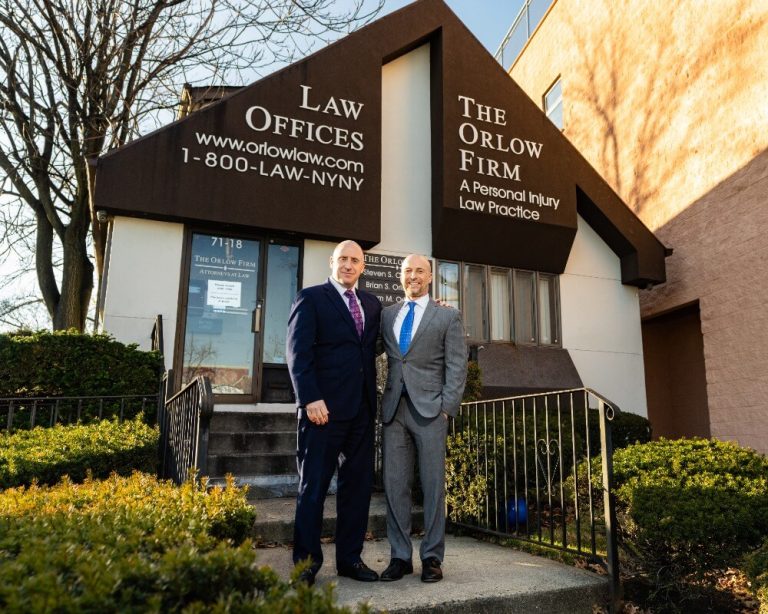
If you were injured because of a danger that was considered “open and obvious,” your legal rights might still be unclear. These types of claims can be more challenging, but that doesn’t mean you have no options. At The Orlow Firm, we help New Yorkers understand where they stand in these situations and what steps they can take next.
An “open and obvious hazard” usually means a danger that is easy to see, like a large hole in a sidewalk or a wet floor with a clear warning sign. Property owners often argue that they should not be held responsible because the danger was visible. But this is not always the end of the story. There are many things a court looks at, such as:
- How unavoidable the hazard was : Was there a safe way around it?
- Who encountered the hazard : Was the injured person a visitor, shopper, or worker?
- Actions of the property owner : Did they take proper steps to fix or warn about the danger?
Every case is different. Just because a hazard was open and obvious doesn’t mean the property owner is free from blame. For example, if a store left a large box in the middle of an entrance, even if people could see it, it may still be unsafe—especially if it blocks a common path or leaves no safe way to get by.
At The Orlow Firm, we take the time to review all the facts. We listen to your side of the story, gather evidence, and explain your rights under New York law. We know how tough it can be to deal with an injury, especially when property owners or insurance companies say it’s your fault. You don’t have to face them alone.
Your consultation is free, and you pay nothing unless we recover money for you. If you’ve been hurt by what someone calls an “open and obvious” hazard anywhere in NYC—whether in a store, on a sidewalk, or at a work site—call us today at (646) 647-3398. We’re here to help you understand your options and support you every step of the way.
The Following People Contributed to This Page
Cindy Cordova is a seasoned legal writer with over seven years of experience crafting clear, informative, and professional content for law firm websites. With a B.A. in English from Trinity Christian College, she combines her strong writing background with a deep understanding of legal topics to help firms connect with their clients through trustworthy and accessible content.
